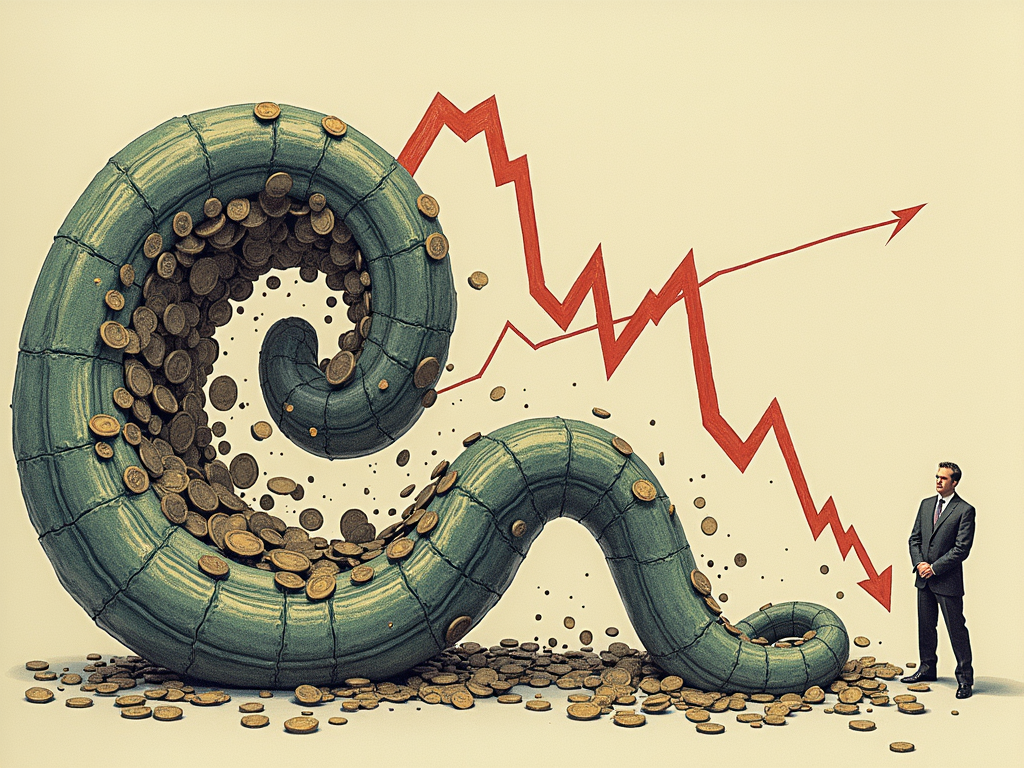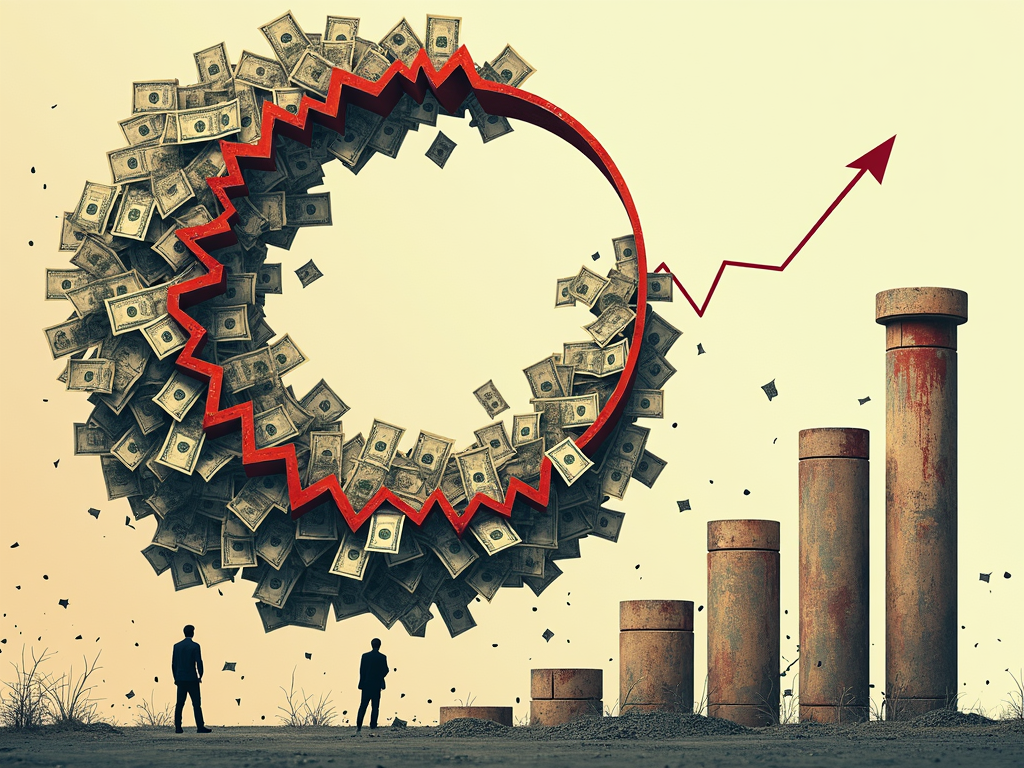Deflation, the phenomenon of falling prices, may initially seem appealing: who wouldn’t be happy with cheaper products? However, for investors and private savers, deflation can represent a double-edged sword. While purchasing power increases, declining corporate profits and a stagnant economy can put returns at risk. In this article, we will explore the complex consequences of deflation on the economy and offer insights on how an investor can navigate intelligently. The upcoming chapters will examine the causes and effects of deflation, as well as strategies to adapt to these economic conditions.
The complex dynamics behind falling prices: causes and effects of deflation

Deflation, the phenomenon of the continuous loss of value of prices, poses a series of economic challenges that go beyond mere price decreases. The causes of deflation are multiple and interconnected, often interacting with each other.
A decisive factor in deflation is the reduction in the money supply. This can occur when central banks adopt a restrictive monetary policy or when financial institutions are restrictive in granting loans. Less money in circulation reduces purchasing power, leading to falling prices. At the same time, productivity efficiency and technological advancements allow companies to cut costs and often pass on savings to consumers through lower prices.
Another critical factor promoting deflation is declining demand due to economic uncertainties. In times of economic uncertainty, both consumers and companies tend to limit spending and investments. This in turn causes weak demand and thus a decrease in prices. The debt repayment also contributes to deflationary pressure, as paying off debts leaves fewer resources available for consumption and investment.
As for the consequences of deflation, an ambivalent reality emerges. On one hand, there is an increase in the purchasing power of consumers, as the same amount of money can buy more goods. Even at the corporate level, improvements in efficiency and cost reduction can have positive effects. But the negative consequences tend to prevail: companies find themselves under significant pressure, as falling prices are accompanied by unchanged fixed costs. This can lead to reduced investments and, possibly, layoffs.
Furthermore, deflation often leads to a downward economic spiral. Consumers postpone purchasing decisions in anticipation of further price declines, which slows the flow of money in the economy. Combined with an increase in the real debt burden due to the increased value of money, the economic situation for debtors becomes increasingly difficult. All these factors together can, without appropriate political action, lead to reduced growth or even recession.
The discussion about deflation generates a growing awareness both in the economic and political fields regarding the need for measures against the potential negative consequences of a continued decrease in prices on the economy and society as a whole.
How investors can leverage opportunities and minimize risks in times of deflation

In times of deflation, investors face the challenge of protecting their assets while simultaneously capitalizing on potential opportunities. Adapting investment strategies becomes crucial to succeed in a phase of falling prices. One of the key strategies is portfolio diversification. By investing in various sectors such as stocks, bonds, real estate, and alternative investments, investors can reduce the risk of losses. Stocks of companies with stable cash flows and low debts represent a promising option, as they tend to perform better in the face of challenges posed by deflationary phases.
Understanding the deflation-resistant sectors can also prove advantageous. Sectors such as healthcare and utilities are characterized by relative independence from economic fluctuations and can provide stable returns during crises. Basic consumer goods remain in demand despite price declines, providing greater stability to these companies.
Precious metals, particularly gold, are considered safe investments in times of economic uncertainty. They not only act as a hedge against value loss but can also maintain or even increase their value in a context of falling prices. Government bonds and state securities are also considered reliable as they offer fixed returns and reduced risk during deflationary times.
Further considerations include avoiding debts. As the value of debts increases with deflation, investors should reduce them to minimize the burden, considering the increased purchasing power of money. Focusing on long-term prospects remains essential, as deflationary phases are temporary and long-term-oriented investments often provide significant advantages.
Alternative investments such as private equity and hedge funds can represent interesting options during these periods, as they often operate outside traditional markets. Finally, expert advice is invaluable for developing tailored strategies that ensure both protection and growth opportunities. Investors who intelligently diversify and target deflation-resistant sectors can succeed even in challenging times.